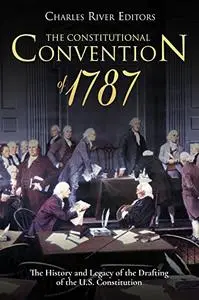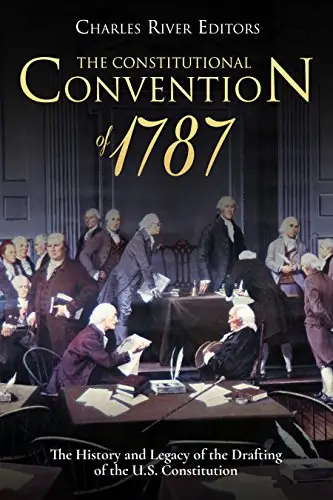The Constitutional Convention of 1787: The History and Legacy of the Drafting of the U.S. Constitution by Charles River Editors
English | March 5, 2018 | ISBN: 1986154327 | 83 pages | EPUB | 1.09 Mb
English | March 5, 2018 | ISBN: 1986154327 | 83 pages | EPUB | 1.09 Mb
*Includes pictures
*Includes contemporary accounts
*Includes online resources and a bibliography for further reading
*Includes a table of contents
“All communities divide themselves into the few and the many. The first are the rich and well born, the other the mass of the people. The voice of the people has been said to be the voice of God; and however generally this maxim has been quoted and believed, it is not true in fact. The people are turbulent and changing; they seldom judge or determine right. Give therefore to the first class a distinct, permanent share in the government. They will check the unsteadiness of the second, and as they cannot receive any advantage by a change, they therefore will ever maintain good government. Can a democratic assembly, who annually revolve in the mass of the people, be supposed steadily to pursue the public good? Nothing but a permanent body can check the imprudence of democracy. Their turbulent and uncontroling disposition requires checks.” – Alexander Hamilton, quoted in Notes of the Secret Debates of the Federal Convention of 1787
By 1787, it became evident that the Articles of Confederation were inadequate for the new nation. With these problems hampering the national government under the Articles of Confederation and the threat of default on the nation's massive war debt looming, plans began being made to fix the problems of the Articles of Confederation. Thus, that summer a Constitutional convention was called, and each state sent delegates to Philadelphia. Among the delegates were prominent patriots and former members of the Continental Congress, including George Washington and Benjamin Franklin.
However, while most of the delegates came to Philadelphia virtually starting with nothing, Alexander Hamilton and James Madison arrived in Philadelphia well-prepared and well-studied. Hamilton had been a leader in calling for a Constitutional Convention to restructure the nation's government at the convention in Annapolis a year earlier. At that convention, Hamilton had been elected to draft a document describing the reasons for a stronger national government. The letter was sent to each of the 13 states, and it was instrumental in leading to the opening of the Constitutional Convention in 1787.
Meanwhile, Madison had been brushing up on his political theory and actually prepared extensively for the Convention. Madison used his extensive knowledge of ancient and foreign languages to study Constitutions from across the world, which he had done this prior to helping craft the Virginia Constitution. Thus, he was already considered something of an expert on Constitutionalism. Given that background, and the fact that he had done more legwork than anybody else at the Convention, delegates looked to him as a leader on the subject.
The Constitution was a decisive move away from the Articles of Confederation which the proponents of the Constitution claimed promoted dissonance by giving the States too much autonomy. They argued that a strong federal government ought to be empowered to maintain standing armies, provide for a national militia, and be able to levy direct taxes to support its common defense and provide for economic prosperity. Certain fears about the federal government becoming omnipotent and abusing its military authority or right to tax, they argued, should be assuaged by understanding the role of legislature, or the representatives of the people, in determining the central government's authority to raise an army and levy taxes. This was a democratic experiment that had never been embarked upon before.
The Constitutional Convention of 1787: The History and Legacy of the Drafting of the U.S. Constitution looks at how America’s governing document came to be. Along with pictures of important people, places, and events, you will learn about the Constitutional Convention like never before.
Feel Free to contact me for book requests, informations or feedbacks.
Without You And Your Support We Can’t Continue
Thanks For Buying Premium From My Links For Support
Without You And Your Support We Can’t Continue
Thanks For Buying Premium From My Links For Support



